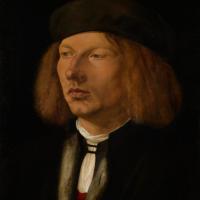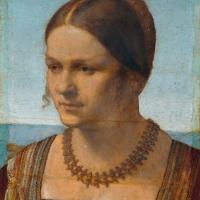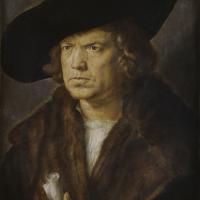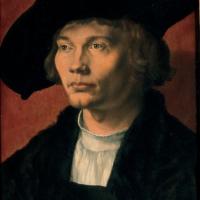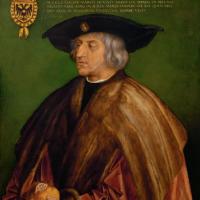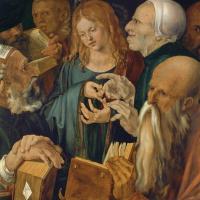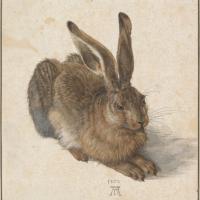Albrecht Durer
Adoration Of The Trinity
$540.00
Burkhard Of Speyer
$480.00
Jakob Muffel
$480.00
Johannes Kleberger
$510.00
Portrait Of An Unknown Man
$480.00
Virgin And Child With A Pear
$480.00
Young Hare
$480.00
Albrecht Durer
Albrecht Durer (1471-1528)
Albrecht Dürer (21 May 1471 – 6 April 1528) sometimes spelt in English as Dureror Duerer, without umlaut, was a painter, printmaker, and theorist of the German Renaissance. Born in Nuremberg, Dürer established his reputation and influence across Europe when he was still in his twenties due to his high-quality woodcut prints. He was in communication with the major Italian artists of his time, including Raphael, Giovanni Bellini and Leonardo da Vinci, and from 1512 he was patronized by Emperor Maximilian I. Dürer is commemorated by both the Lutheran and Episcopal Churches.
Dürer's vast body of work includes engravings, his preferred technique in his later prints, altarpieces, portraits and self-portraits, watercolours and books. The woodcuts, such as the Apocalypse series (1498), are more Gothic than the rest of his work. His well-known engravings include the Knight, Death, and the Devil (1513), Saint Jerome in his Study (1514) and Melencolia I (1514), which has been the subject of extensive analysis and interpretation. His watercolours also mark him as one of the first European landscape artists, while his ambitious woodcuts revolutionized the potential of that medium.
Dürer's introduction of classical motifs into Northern art, through his knowledge of Italian artists and German humanists, has secured his reputation as one of the most important figures of the Northern Renaissance. This is reinforced by his theoretical treatises, which involve principles of mathematics, perspective, and ideal proportions.
Dürer exerted a huge influence on the artists of succeeding generations, especially in printmaking, the medium through which his contemporaries mostly experienced his art, as his paintings were predominantly in private collections located in only a few cities. His success in spreading his reputation across Europe through prints was undoubtedly an inspiration for major artists such as Raphael, Titian, and Parmigianino, all of whom collaborated with printmakers in order to promote and distribute their work.
His work in engraving seems to have had an intimidating effect upon his German successors, the "Little Masters" who attempted few large engravings but continued Dürer's themes in small, rather cramped compositions. Lucas van Leyden was the only Northern European engraver to successfully continue to produce large engravings in the first third of the 16th century. The generation of Italian engravers who trained in the shadow of Dürer all either directly copied parts of his landscape backgrounds (Giulio Campagnola, Giovanni Battista Palumba, Benedetto Montagna and Cristofano Robetta), or whole prints (Marcantonio Raimondi and Agostino Veneziano). However, Dürer's influence became less dominant after 1515, when Marcantonio perfected his new engraving style, which in turn travelled over the Alps to dominate Northern engraving also.
In painting, Dürer had relatively little influence in Italy, where probably only his altarpiece in Venice was seen, and his German successors were less effective in blending German and Italian styles. His intense and self-dramatizing self-portraits have continued to have a strong influence up to the present, especially on painters in the 19th and 20th century who desired a more dramatic portrait style. Dürer has never fallen from critical favour, and there have been significant revivals of interest in his works in Germany in the Dürer Renaissance of about 1570 to 1630, in the early nineteenth century, and in German nationalism from 1870 to 1945.
Dürer's study of human proportions and the use of transformations to a coordinate grid to demonstrate facial variation inspired similar work by D'Arcy Thompson in his book On Growth and Form.



